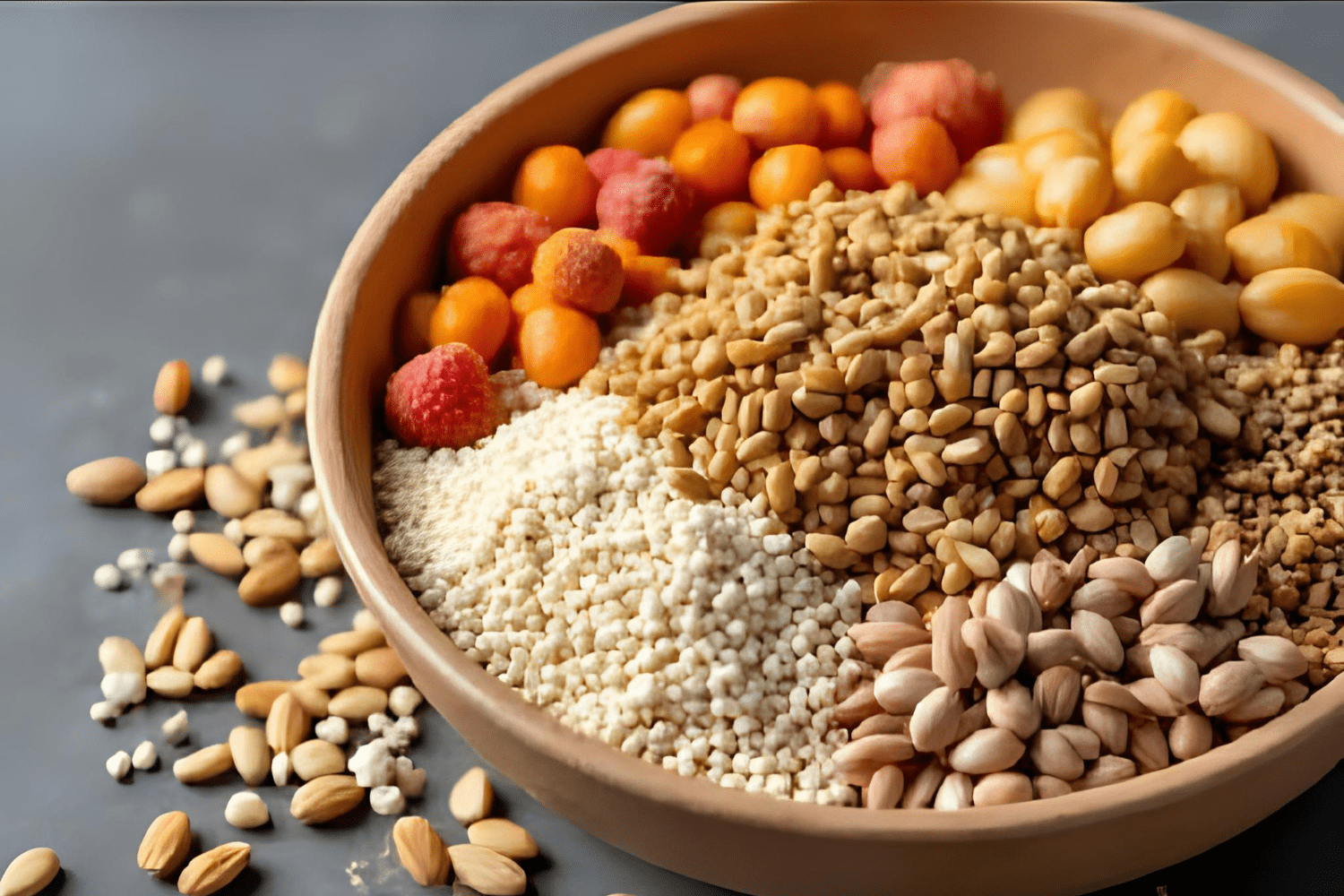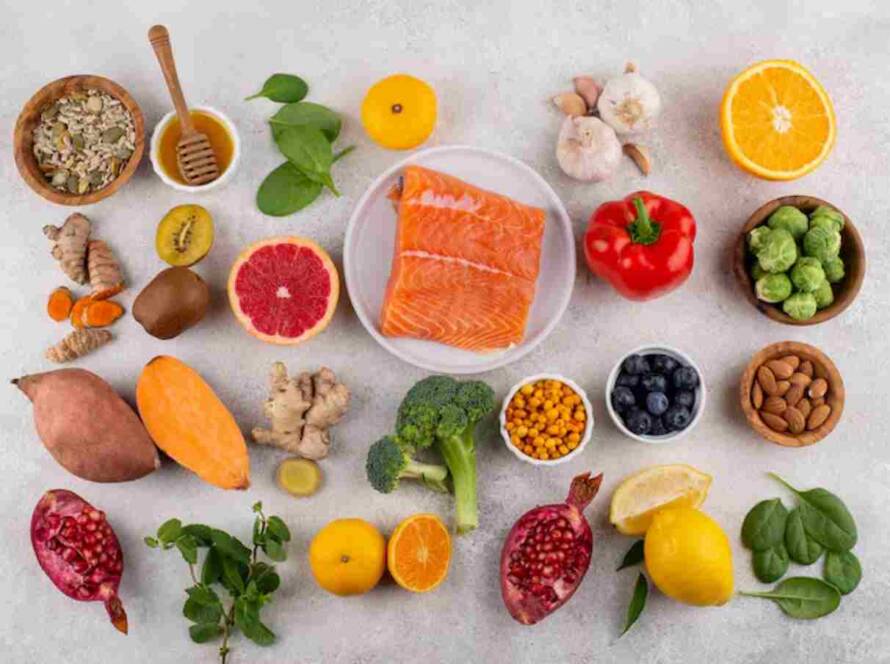How Much Fibre Do You Really Need for a Healthy Gut?
Digestive problems can feel like they run your day, causing bloating, sluggishness, and unpredictable bathroom trips. A lot of us deal with this quietly, not realising our gut is asking for help. One of the easiest ways to give it support? Fibre.
Fibre plays a significant role in how your digestive system works, and it’s key to feeling balanced and comfortable. It’s not just about staying “regular,” it fuels your gut bacteria, which affect everything from your mood to your immune system.
The tricky part? Most people aren’t getting nearly enough. That’s where things start to go off track. So let’s get transparent on how much fibre for gut health is actually needed, what types matter, and how to get enough without totally changing how you eat.
Why Fibre Matters for Your Gut
Fibre does more than just help you go to the bathroom. It feeds the good bacteria living in your gut, which keeps your digestive system running smoothly. That bacteria, in turn, support your immune system, mood, and even how your body handles sugar.
When your gut is in good shape, you feel it. You sleep better, your energy’s more stable, and your stomach isn’t constantly cramping or bloated. It’s like your body’s quietly thanking you for fuelling it right.
What Is Fibre?
Fibre is the part of plant-based foods that your body can’t fully digest. But instead of just passing through, it helps clean things out and feeds your gut’s friendly microbes. Think of it as both a broom and a buffet.
There are two types of fibre: soluble and insoluble. Each one plays a unique role in digestion, and your gut needs both to work at its best.
What’s the Difference Between Soluble vs. Insoluble Fibre
Soluble fibre dissolves in water and turns into a gel. This helps slow down digestion, lower cholesterol, and keep blood sugar steady. You’ll find it in oats, beans, lentils, apples, and chia seeds.
Insoluble fibre doesn’t dissolve and adds bulk to your stool. This is the kind of fibre that helps with regularity and prevents constipation. You get it from foods like whole wheat, brown rice, and veggies like carrots or broccoli.
Your gut doesn’t need you to pick a favourite. A mix of both is where the magic happens.
Recommended Daily Fibre Intake
Let’s talk numbers. In Canada, the recommended daily fibre intake looks like this:
Group | Grams of Fibre Per Day |
Adult women (19–50) | 25 g |
Adult men (19–50) | 38 g |
Women 50+ | 21 g |
Men 50+ | 30 g |
Most Canadians aren’t even close. On average, people are getting just 15 to 19 grams per day. That’s about half of what’s needed to support proper digestion and gut function.

Why Most of Us Are Falling Short
Fibre isn’t in everything. It’s mostly in plants, fruits, vegetables, legumes, and whole grains. And with so many processed foods in our diets, fibre often gets pushed to the back seat.
Quick breakfasts, fast food, or skipping meals altogether? That’s how the gaps sneak in. It’s not just about what we eat, but also what we forget to.
Fibre Needs for Gut Health
Fibre needs for gut health aren’t one-size-fits-all. Your age, sex, activity level, and medical conditions can change your fibre requirements. So while charts are helpful, they’re not gospel.
Pregnant or breastfeeding? You likely need a little more. Dealing with IBS or other gut issues? You might need to ease into fibre changes carefully.
Fibre Grams Per Day: Men vs Women
Men typically need more fibre because they generally eat more and have higher energy requirements. Women, especially during pregnancy or menopause, might also need more, depending on their health. Here’s a simple breakdown to keep in mind:
- Men under 50: 38 grams
- Women under 50: 25 grams
- Men over 50: 30 grams
- Women over 50: 21 grams
Keep in mind that these are general targets. Listening to your body matters too.
Daily Fibre Recommendation for Digestion
For digestion, you want a balance. Fibre should be added slowly and consistently, not all at once. Drinking water helps a lot—it keeps things moving and avoids bloating or discomfort.
Here are a few daily fibre recommendations for digestion that work well for most people:
- Start your day with oatmeal or whole-grain toast
- Add beans or lentils to soups and salads
- Snack on fruit, nuts, or popcorn instead of chips
- Switch white rice or pasta for brown or whole grain versions
Try not to overthink it. Small swaps can go a long way.
What Happens When You Don’t Get Enough Fibre?
When your diet is low in fibre, you may feel bloated, sluggish, or backed up. Over time, this can lead to more serious issues like diverticulitis, haemorrhoids, or even blood sugar problems. A fibre-poor gut often means your good bacteria are starving, and that affects more than your belly.
A low-fibre diet can also raise cholesterol and make it harder to manage your weight. That’s because fibre helps you feel full longer and keeps your blood sugar from spiking. It’s like a gentle traffic controller for your whole digestive system.
How to Increase Your Fibre Without Feeling Miserable
Upping your fibre too fast can make you feel worse before it makes you feel better. You might get gas, bloating, or cramps if your gut isn’t ready.
Start planning your diet. Go slow and add a few grams each day over a week or two. Drink more water, and choose whole foods over fibre bars or powders whenever you can.
Here’s a list to help ease into higher fibre living:
- Week 1: Add a fruit or veggie at each meal
- Week 2: Swap white bread or rice for whole grain
- Week 3: Include beans or legumes in one meal daily
- Week 4: Try a high-fibre breakfast daily like chia pudding or bran cereal
Patience pays off.
Best High-Fibre Foods to Eat Every Day
Not all fibre foods are created equal. Some pack more punch than others and are easy to work into everyday meals.
Here are a few MVPs:
Food | Fibre Per Serving |
|---|---|
Lentils (1 cup cooked) | 15.6 g |
Chickpeas (1 cup) | 12.5 g |
Raspberries (1 cup) | 8 g |
Chia seeds (2 tbsp) | 10 g |
Oats (1 cup cooked) | 4 g |
Broccoli (1 cup) | 5 g |
Pear (with skin) | 5.5 g |
Keep a mix of soluble and insoluble options on your plate. That’s how your gut stays happy.

Should You Use Fibre Supplements?
Fibre supplements can help if you’re falling short, but they’re not a magic solution. They don’t have the same vitamins, antioxidants, or water content as whole foods. Plus, too much too fast can backfire, causing bloating and discomfort.
Talk to your healthcare provider before jumping into supplements, especially if you’re on medication or have any gut issues.
Tips for Sticking to a High-Fibre Lifestyle
The key is to make fibre a habit, not a chore. Don’t treat it like a diet goal, treat it like fuel for your gut, your brain, and your mood.
Here are a few easy ways to stay on track:
- Meal prep fibre-rich snacks like hummus and veggies
- Keep frozen berries or peas on hand for quick meals
- Add flax or chia to smoothies, soups, or baking
- Read labels and look for 4+ grams of fibre per serving
- Eat the skin! That’s where the fibre hides in fruits and veggies
Your gut will thank you. And so will your energy, skin, and focus.
Conclusion
So, how much fibre for gut health do you need? Aiming for between 25 and 38 g a day, depending on your age and gender, gives your gut the support it deserves. Think of fibre not as a chore, but as a daily kindness to your body and your inner world.
If you’re someone who prefers proactive, personalised guidance for your health journey, you might appreciate the approach taken by services like Lifespire’s Longevity Program. They combine cutting‑edge screenings, data‑driven planning, nutrition, fitness, and ongoing support to help you live longer and feel better—so you’re not just adding years, but adding vitality to every one of them.
For a deliberate path to well‑being, you can explore our Longevity Program.


